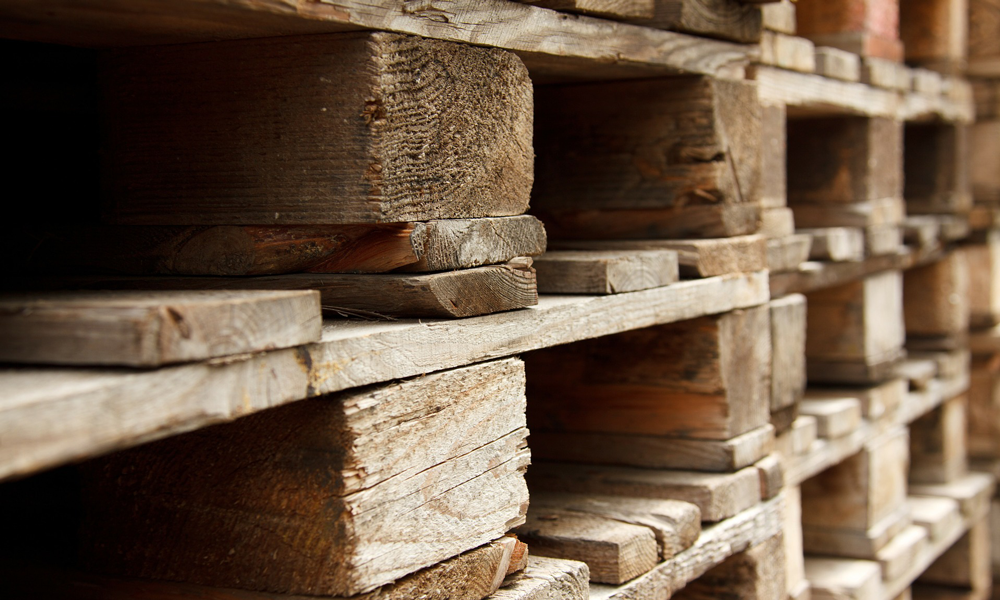Gary Moore, sales director at UNTHA UK, looks at how to handle this “saturated” material stream.
Wooden pallets have long been a vital component within the packaging market. They are a staple part of most storage and distribution facilities – with warehouses, logistics firms, and manufacturers relying on these robust products to stack and move their goods on a daily basis.
In 2017, it was reported that there were circa 250 million timber pallets in circulation in Britain alone, and this figure is likely considerably higher in 2022.
But is the humble wooden pallet gaining the respect and attention it deserves throughout the industry? And are its financial gains being recognised?
Challenging perceptions and taking control
Within the industry, it’s easy to see wooden pallets as a ‘common commodity’ that simply arrives at a site or facility housing goods and, once it’s served its purpose, leaves via a third-party contractor to be disposed of or recycled.
However, this is where a mindset shift needs to happen, as it can reap considerable rewards – both environmentally and financially.
By processing wooden pallets on site – using a specially engineered industrial shredder – operators can take control of their own ‘waste’ pallets and eliminate costly off-site disposal fees in the process.
By processing wooden pallets on site – using a specially engineered industrial shredder – operators can take control of their own ‘waste’ pallets and eliminate costly off-site disposal fees in the process.
As a result, this would help to shift the perception dial and enable pallets to be seen less of a ‘costly problem’ and more of an opportunity – generating a profitable revenue stream for the organisation.
In essence, it’s a sustainable resource with a wealth of – often unnoticed – potential attached. It’s simply a case of knowing how and why.
So, why shred wooden pallets?
Alongside the aforementioned financial benefits attached to recycling this product on site, there are many operational and logistical advantages to consider, too.
Ultimately, while wooden pallets may be easy to stack, in space-restricted facilities they can occupy valuable room, and in some instances, even present a fire risk.
And while facilities can choose a responsible waste contractor to dispose of any worn or damaged pallets, these bulky products soon fill skips, which means the ongoing transportation – not to mention the accompanying waste management fees – can prove expensive and inefficient.
Shredding can alleviate these challenges by not only helping to reduce the volume of waste, but also optimising the onward logistics of the material – avoiding unnecessary expense and negative environmental impact.
How can operators take control of their wood waste?
Being self-sufficient when it comes to pallet recycling doesn’t have to be daunting – neither in terms of knowledge nor costs.
Industrial pallet shredders, such as the PS1300, are designed specifically for this application.
The PS1300 is compact and powerful and is able to transform a previously considered waste problem into a valuable resource – a homogenous wood chip. Furthermore, depending on the grade of the chip, it can either be used for remanufacturing, animal bedding, or it can be sold for biomass heat recovery or landscaping mulch.
By more organisations taking responsibility when it comes to their wooden pallets, and shredding them on site, this would present an environmentally responsible and efficient way of handling this saturated material stream.
Together, this means the business case for machinery stacks up in terms of both affordability and long-term value.
In fact, a company using a standard PS1300 shredder to produce a 30mm biomass product, at an average rate of 32 pallets per hour and based on a market value of £65/tonne for the shredded chip, can achieve a gross profit of £31.11 per hour, £1377.68 per week, £4407.67 per month, and £52892 per year.
Then, in terms of the ‘nitty gritty’ regarding how this hardwearing equipment works, it features an aggressive cutting system – meaning foreign objects such as screws, nails, and other packaging materials are removed via a magnet.
As a result, these additional recyclables are also extracted, for maximum output product quality, and environmental gain.
Final thoughts
By more organisations taking responsibility when it comes to their wooden pallets, and shredding them on site, this would present an environmentally responsible and efficient way of handling this saturated material stream.
So, if the right tools exist to make this possible, the only question for industry professionals to contemplate is when to start?
